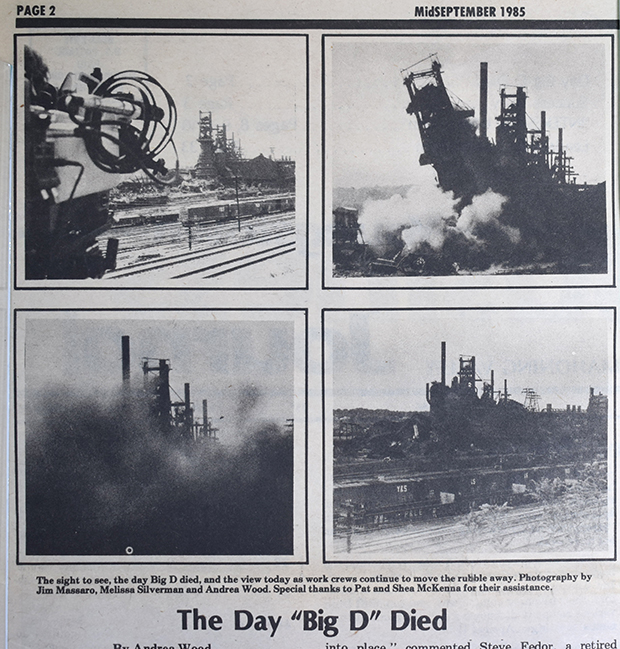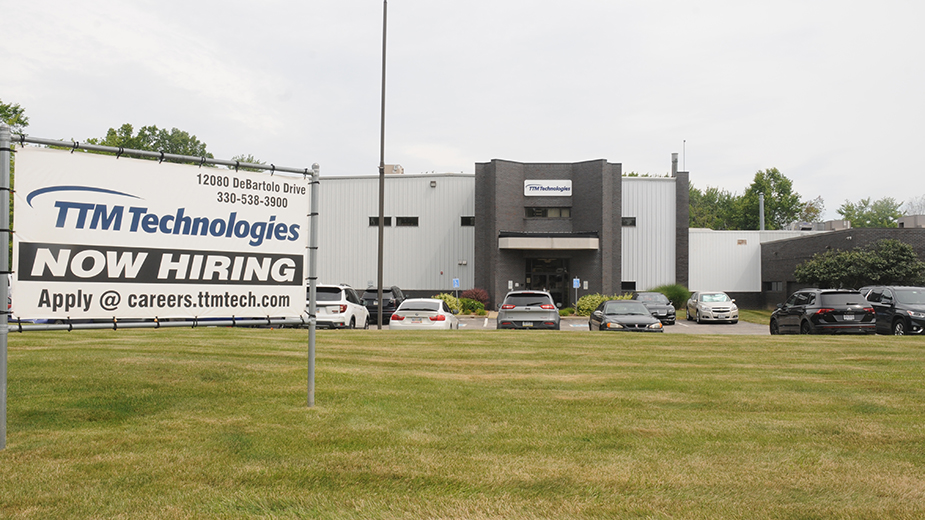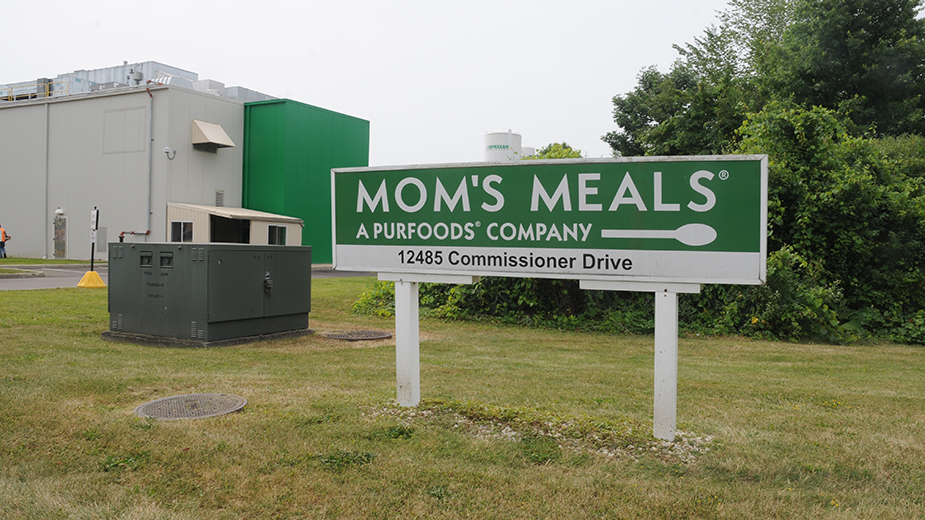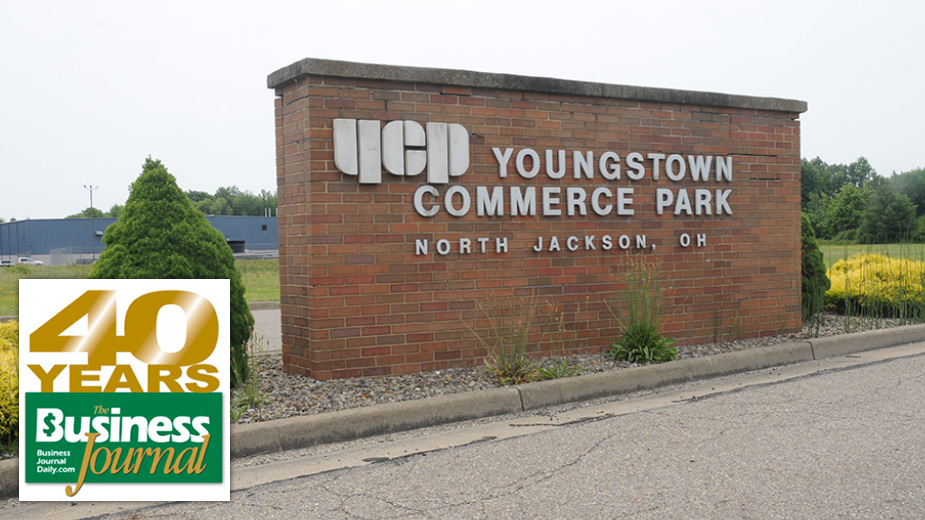Business Journal at 40: Manufacturing and the Economy
YOUNGSTOWN, Ohio – The economic forecast for 1984 in the Mahoning Valley looked optimistic as the region and other communities across the country began the slow recovery from the devastating recession of the early 1980s.
Still staggering from the gut punch delivered by the shutdowns of two major employers – Youngstown Sheet & Tube began closing its plants in 1977 and U.S. Steel Corp.’s Ohio and McDonald Works had shuttered by 1981 – the unemployment rate in the Youngstown-Warren region had reached 24.9% in 1982.
That was the highest of any metro area in the country and a depth of suffering not experienced here since the Great Depression.
Bleak as it was, two economics professors at Youngstown State University predicted that the local economy would show modest improvement in 1984, the first signs of a slow, meandering recovery that continues 40 years later.
A report written by YSU professors Yih-Wu Liu and Anthony Stocks, released in late 1983, showed unemployment stubbornly high at 14.1% in November of that year but down from 23% during the same period in 1982. By the close of 1984, the researchers projected unemployment would hover between 11% and 12%, still elevated, and ultimately accurate.
Since then, the Mahoning and Shenango valleys have witnessed seismic changes.
The regional manufacturing economy of the last quarter of the 20th century is today a distant image – one no longer dominated by the behemoths of the steel and automotive industries that employed tens of thousands and supported tens of thousands of other jobs in the region.
In time, the region proved resilient. Manufacturers diversified, became leaner and adopted new technologies.
The Struggle
I came here in 1980, shortly after Sheet & Tube closed and U.S. Steel was closing its shop,” recalls John Russo, then a newly hired professor who would serve as director of the Center for Working Class Studies at Youngstown State University. Today, Russo is the visiting fellow at Kalmanovitz Center for Working Poor at Georgetown University. “Other jobs were collapsing also. Youngstown became a metaphor for deindustrialization,” he says.

Russo describes the decline as “incredibly rapid” – caused by a synthesis of deindustrialization, corporate restructuring and global economics that especially affected legacy factory towns across the country. “It greatly impacted cities such as Youngstown and changed the economic fortunes for those living in these communities,” he says.
For many, the only option was to relocate, Russo says. “Many went to Houston,” he recalls, noting there existed a section of that city that earned the nickname “Little Youngstown,” a reference to the substantial number of transplants from the Mahoning Valley.
“The housing stock was emptying – and the population,” he recalls. “You could see the decline.”
The evidence of this decline is clear today, Russo says, as he drives through many of the old neighborhoods that are punctuated with empty but landscaped, lots. “There were houses there once,” he laments.
In the wake of the steel shutdowns, community leaders launched initiatives to attract new business as larger manufacturers closed their doors. “Youngstown was never going to truly recover,” Russo says, “but would it be enough to stop the hemorrhaging?”
It did – or at least these efforts slowed the process, Russo says. Skilled workers who were veterans from the metals industries found jobs at smaller manufacturers while new industrial parks provided space for more diversified employers – both manufacturing and distribution companies.
Still, the number of workers that manufacturers employed continued to drop while employment in other sectors of the local economy – specifically health care and education services – increased substantially.
“Service jobs, the health care jobs that replaced manufacturing jobs,” he says, “didn’t pay as much.”
Statistics bear this out. Over the last 34 years, the manufacturing workforce in the Youngstown-Warren-Boardman metropolitan statistical area, or MSA, has shrunk considerably. In June 1990, approximately 62,300 were employed in the Youngstown-Warren MSA’s manufacturing sector. The sector also encompasses Mercer County in western Pennsylvania, according to the Bureau of Labor Statistics. The most recent data show that as of April 2024, 27,300 were employed in manufacturing, a decrease of 56%.
Simultaneously, employment in the education and health care services sectors grew from 30,800 employed in January 1990 to 41,300 employed in April 2024 – an increase of 34%. That number would likely be higher were it not for the Covid-19 pandemic.
This trend is often attributed to several factors, including the region’s overall loss of population, companies that have closed or downsized, an aging demographic, and a shrinking workforce. In January 1990, the region’s workforce stood at 282,462 with a high unemployment rate of 11%. As of April 2024, the labor force was estimated at 231,325 with a more agreeable unemployment rate of 4.9%.
Road to Better Times
By the early 1990s, it was clear that Big Steel was gone, that the percentage of manufacturing positions relative to the size of the labor force was also contracting. In 1990, for example, data show that manufacturing positions accounted for 23% of the region’s employed workforce. As of April 2024, manufacturing jobs consisted of just 12.4% of the employed labor force, according to the Bureau of Labor Statistics.
In reaction to the steel shutdowns and an economy in freefall, a core group of business and political leaders across Mahoning and Trumbull counties convened to establish an organization that would help support small-to-medium size businesses in the local economy.
Their answer was the Mahoning Valley Economic Development Corp. – recently renamed Valley Economic Development Partners. The organization, formed in 1979, works with area banks and acts as a conduit for small-business loans for startups and those companies looking to expand.
“It was a response to try to get the economy restarted,” says Don French, who joined MVEDC as its executive director in 1980. At one point, some 30 volunteer members sat on the MVEDC Board of Directors, including those representing private industry, the financial sector, academia and the public sector.

“I was a board member beginning in the early 1980s and ended up serving for 30 years,” recalls George Beelen, professor emeritus of history at YSU. Among the board members who served were business and community leaders such as Bill Lyden, former Youngstown Mayor J. Phillip Richley, Diane Sauer, Forrest Beckett and attorney Paul Dutton. “Plus, there were township trustees on the board and Trumbull and Mahoning County commissioners,” Beelen says.
French stressed that the organization’s major goal was to create a unified response to the economic emergency brought on by deindustrialization. “It was one of the first efforts to get all the communities and different government agencies to coordinate and work together,” he says. “Over the years, that became more of a reality.”
A prime objective of MVEDC was to help attract and support businesses from a variety of industries and, in the process, diversify the Mahoning Valley economic base, French says. Doing so would limit the region’s vulnerability of being so heavily dependent on a single industry such as steelmaking, as it once did.
As such, MVEDC was responsible for spearheading the development of two industrial parks: the Youngstown Commerce Park in North Jackson and the Warren Commerce Park in Warren. The DeBartolo family donated land in North Jackson, French says, while the Solomon and Post families contributed land to build the Warren park.
“The locations are the strong point,” French says. Both leverage the region’s nearby highway system as a marketing tactic to lure manufacturing, transportation and distribution companies. “We always thought that these were great areas to redevelop.”
North Jackson, for example, has since emerged as a hub for major distribution centers and manufacturing. “I think the park proved that the area was great for distribution,” Frensh says.
Today, Valley Partners continues to develop new programs to support local businesses and entrepreneurs, says Teresa Miller, its current executive director. “We had a record number of loans we closed last year,” she notes.
More Challenges, Adaptation
As the regional economy diversified, there existed the very real concern of losing what was seen as the anchor economic engine of the entire Mahoning Valley: General Motors’ Lordstown assembly plant. By 2004, the automotive industry in the area was already under strain. Delphi Corp., then among the largest automotive suppliers in the country that once employed some 14,000 at its plants in Warren, declared bankruptcy. The company – now renamed Aptiv – today employs about 700 locally.

In 2019, the unthinkable happened as GM announced it would end production of the Chevrolet Cruze and shutter its Lordstown plant, which two years earlier employed 3,500. At its peak, the Lordstown plant employed well over 13,000. Efforts to revive the plant – now owned by Foxconn – continue. Foxconn plans to act as a contract manufacturer to develop electric vehicles. Today, the plant employs 500 and manufactures the Monarch MK-V battery-powered electric tractor.
As GM exited, the region was buoyed by the construction of the Ultium Cells manufacturing plant in Lordstown on land once owned by General Motors. That company, a joint venture between GM and Korea-based LG Energy Solution, produces cells for electric vehicle batteries used in GM’s portfolio of EVs. It employs more than 1,600. Recently, workers represented by the United Auto Workers at the plant voted overwhelmingly to approve a collective bargaining agreement with Ultium, rekindling a major organized labor presence in the region.
Other companies have helped to develop innovative ways to adapt to dynamic changes affecting manufacturing and the workforce.
“The biggest thing that stands out with us is our diversification of customers and industries,” says Brian Benyo, co-owner of Brilex Group of Companies. The business, founded in Youngstown by Benyo and his brother, Alex, in 1996, has since expanded to five divisions: Brilex Industries, Taylor Winfield Technologies, Brilex Technical Solutions, BBM Railway Solutions, and Brilex Energy Solutions.
Its core business, Brilex Technologies, acts as a contract manufacturer for customers who design equipment used in a variety of industries, such as heavy industry, metals, wood products, oil and gas and alternative energy products, Benyo says.
A critical component to the success of Brilex and other manufacturers is the continued supply of a skilled workforce, Benyo says. “Over the course of the 1990s and early 2000s, there were a turn of employees that started their careers at manufacturers such as Wean United, which once dominated the area,” he says.
As companies such as Wean closed their doors, Brilex was in a position to hire former employees as its order book expanded. “For the first 15 years, most of our hires were coming in with a minimum of five, if not 10, years of experience,” he says.
By the late 2000s, however, it became apparent to Benyo and others that this pipeline of experienced machinists, fabricators and manufacturing tradesmen would soon dry up if there were no mechanisms in place to help train a new generation of the industrial workforce.
To address this deficit, Benyo, along with other manufacturing executives, workforce development representatives and academic specialists, formed the Mahoning Valley Manufacturers Coalition, a consortium that has helped to secure funding to develop curricula and training programs for industry.
The effort has been vital to sustaining the industrial backbone of the region, Benyo says.
“From my perspective, if the MVMC hadn’t been created, I struggle to picture how our businesses would be sustainable from a standpoint of having a base of entry level employees,” he says. Without the help of MVMC, many manufacturers would be forced to assume the costs and time of developing in-house training programs, he says. “I don’t know how viable a solution that would be – even for larger companies like ours and certainly not for smaller companies.”
Technology and the Future
Among those who have witnessed the changing dynamics in manufacturing since the 1980s is Julie Michael Smith, who began her career in economic development as a college intern with MVEDC.
“When I was young, my mother worked at Packard [eventually Delphi Corp.], and my dad worked at Wean,” she recalls. “Manufacturing has always fascinated me. Everybody I knew worked in manufacturing; it was woven into the fabric.”
As she was growing up, many of her contemporaries frowned on a career in manufacturing, often disparaging the jobs as toiling in a dark, hot or freezing cold factory. “The state of manufacturing today is incredibly strong – the average wage is $80,000,” she says.
Smith was eventually hired by MVEDC and several years later accepted a position as Gov. George Voinovich’s regional representative, which continued through the two terms of Gov. Robert Taft.
“I saw companies beginning to adopt more technologies – the integration of computer technologies into production methods, CNC machines, rapid prototyping, collaborative
design programs and additive manufacturing,” she says. “It was transforming even our legacy manufacturing operations into agile organizations that continue to grow. This allowed them to diversify into other products and other markets.”
After her work at the state, Smith joined the Youngstown Business Incubator as that organization was undergoing a transformation all its own. “I was there for three years as construction of the Taft Technology building and the Tech Belt initiative got underway,” she says.

Ultimately, the fruit of the Tech Belt initiative led to the creation of America Makes, the first of the advanced manufacturing hubs created under the Obama administration. America Makes, based in Youngstown, acts as a conduit to promote and encourage projects through the use of additive manufacturing on a national scale.
By that time, Smith had joined Applied Systems and Technology Transfer, a company that worked to expose students in secondary school to 3D printing and additive manufacturing.
“We continued to focus on bringing this type of technology to the schools,” she says. “Not just to introduce them to the technology, but introducing them to how to work in distributed teams, using collaborative software – and really pushing manufacturing.”
It’s this concept of manufacturing that Smith brings to her new role as a consultant, retained by MVMC to help to prepare the workforce for manufacturing programs related to electric vehicle and advanced mobility initiatives. “We’re helping to prepare them with the skills necessary to thrive,” she says.
Although workforce development continues to be a challenge in the face of a declining population – a trend organizations such as the Youngstown/Warren Regional Chamber are trying to reverse – there is some encouraging movement in the right direction.
“While population is still declining, enrollment at career and tech centers is increasing,” Smith says. “You see a region that is increasingly agile through organic businesses and diversification, primed as a great location for new technologies.”
Pictured at top: The Youngstown Commerce Park in North Jackson was created in response to the steel shutdowns.
Copyright 2024 The Business Journal, Youngstown, Ohio.



